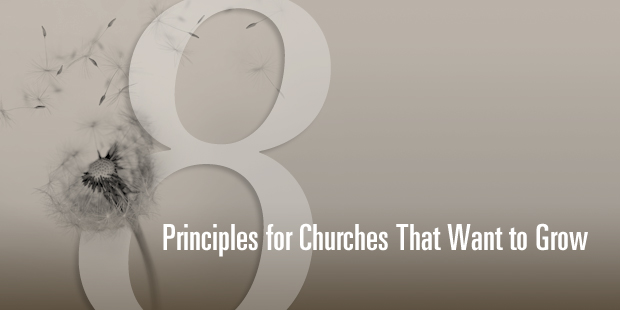
Four Ways Your Church Can Break Attendance Barriers
Almost anytime I mention numbers related to church life, I anticipate some responses about the value of numbers and congregations. In the 1980s, this type of discussion came primarily from more liberal churches that weren’t growing. Some of these leaders felt that declining membership and attendance was likely a sign of health. The members who really cared about the church were the ones who remained. They could make the biggest difference without the more nominal members remaining as obstacles.
Today, it is not unusual for me to hear from more conservative church leaders that declining church numbers may be a good sign because it is an indication that the numbers reflect true regenerate members. But, for the purpose of this brief article, let’s assume that attendance growth is a positive indicator. Presumably more people are hearing the gospel and being discipled when a church is growing.
It is in that context that I hear almost every week from church leaders whose churches seem stuck at some level of attendance: 100, 200, 500, 800, and so on. I even got a call a year ago from a church where the pastor was concerned that attendance was stuck at 7,000!
After 25 years of consulting and researching local congregations, I have found four common approaches churches take to break attendance barriers regardless of size. There are certainly more than four possibilities, but allow me to evaluate these four more common approaches.
1. Create new groups.
These groups may be home groups, small groups that meet in coffee houses, Sunday school classes, ministry groups, and others. Church leaders are intentional about creating groups on an ongoing basis. They typically have goals for the number of groups they start.
Evaluation: Frankly, I have seen great success with this strategy (and recently wrote about this strategy). I would speculate that as many as eight out of ten churches that strategically create new groups grow to new attendance levels. The mystery to me is why most churches don’t have this strategy.
2. Create new worship services.
A church moves from one service to two, or from two to three, or even more. The move is typically precipitated by one or more services running out of space.
Evaluation: Most of the time the new service does aid the church in breaking attendance barriers. But, keep in mind, the church was most likely growing already until it ran out of space. The new service simply takes the lid off so the church can continue to grow. I would caution a church, however, about moving to an additional worship service if it’s not already in a growth mode. The worship center can seem vacuous if one non-growing group is split into two non-growing groups.
3. Create new venues.
This principle is similar to adding worship services, but the church uses a different facility for the new service. That new facility may actually be a new campus. It may be an ethnic service meeting in the church facilities in a different room than the worship center. It may be a merged church from another location. The possibilities are many.
Evaluation: The results thus far are positive. As a church adds a new venue, there is a natural increase in attendance. The multi-campus form of this new venue is growing in use and popularity with mostly good results. We are still a few years away from being able to measure the mid-term impact of new venues on growth. I would be willing to speculate that the results will be very positive.
4. Have a major event.
The church’s strategy is to have one or more events that will create sufficient excitement for members to invite those who aren’t attending church. That event may be tied to a major holiday such as Easter, Fourth of July, or Christmas. It may be tied to a significant tradition in a church. The plan is to get people to attend who would not regularly attend.
Evaluation: I have studied a few hundred churches that use the big event as their major growth strategy, and the results are not good. Attendance tends to rise for a few weeks on and after the event, but then it settles down to previous patterns. Churches can spend a lot of money on big events, but I hardly ever see a church break an attendance barrier consistently, even with those large amounts of resources dedicated to it.
What successful approaches have you seen to break attendance barriers? What do you think of these approaches I have highlighted? Why do churches not create new groups regularly and strategically when it has proven to be the most effective method for growth and for breaking attendance barriers?
Read more from Thom here.

Tags: Attendance, Growth, Thom Rainer, barriers














